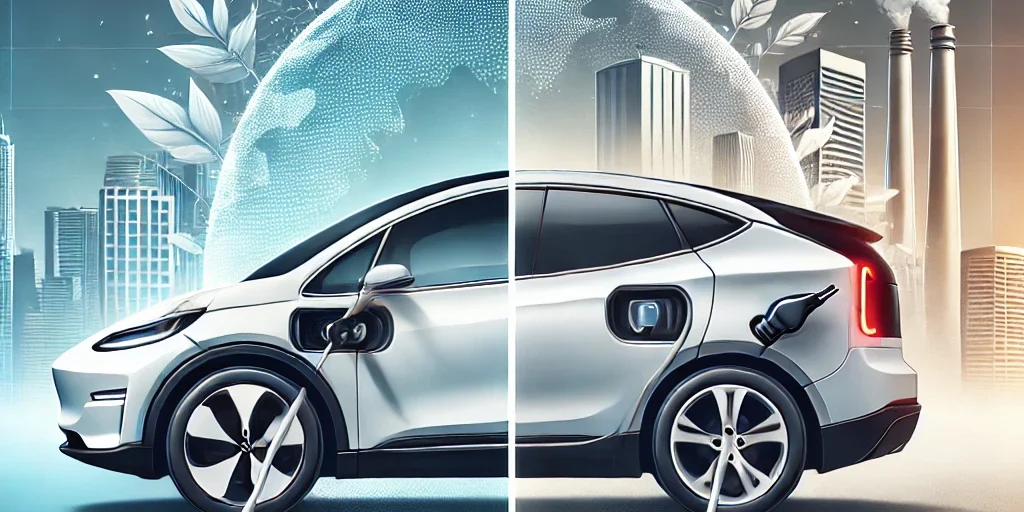Hydrogen Enriched CNG Fuel : Cleaner and More Efficient Vehicle Fuel
The automotive sector is increasingly under pressure to shift to cleaner and more sustainable alternatives in terms of fuel, which reflects broader international efforts targeted at reducing greenhouse gas emissions. One of the most promising alternatives being studied is Hydrogen-Enriched Compressed Natural Gas (HCNG), which is a blend of hydrogen with Compressed Natural Gas (CNG). This fuel blend offers significant environmental and performance benefits, hence providing a cleaner and more efficient alternative for vehicle propulsion. But why introduce hydrogen to CNG, and what makes this blend so good?
Let’s break this down.
Table of Contents
1. Reduced Emissions
Hydrogen-enriched CNG produces lower emissions, particularly in terms of pollutants that contribute to air quality degradation.
Lower NOx Emissions: Hydrogen burns at a higher temperature and with greater completeness than CNG alone. As a result, it produces fewer nitrogen oxides (NOx)—one of the main contributors to air pollution and acid rain. NOx emissions can lead to smog formation and respiratory issues, so reducing them is critical in urban areas.
Reduced CO Emissions: Another advantage of adding hydrogen to CNG is the reduction in carbon monoxide (CO) emissions. CO is a harmful gas produced by improper combustion. With hydrogen’s cleaner burning properties, less CO is generated, further improving air quality.
In practical terms, hydrogen allows for more complete combustion, reducing the release of harmful gases into the environment.
2. Improved Fuel Efficiency
One of the main reasons hydrogen is mixed with CNG is its impact on fuel efficiency. Hydrogen’s unique properties enhance the overall performance of the fuel blend.
Higher Energy Content: Hydrogen has a higher energy density compared to CNG, meaning that it can release more energy per unit of fuel. This makes Hydrogen enriched CNG a more efficient fuel option since more energy can be extracted from the same volume of fuel. In technical terms, this translates to more power being delivered to the engine without increasing the amount of fuel burned.
Faster Combustion: Hydrogen also accelerates the combustion process, leading to quicker, more complete burning of the fuel. This not only improves engine efficiency but also enhances overall fuel economy. Vehicles powered by Hydrogen enriched CNG (HCNG) often see an improvement in mileage, which is especially beneficial for commercial fleets and public transportation systems where fuel costs are a major concern.

# The above graphs are for comparsion purposes only
Also learn how gearbox imporves the efficiency in this article “Why Every Car Needs a Gearbox”
3. Leveraging Existing Infrastructure
One of the biggest advantages of HCNG is that it can be introduced without requiring a complete overhaul of existing infrastructure.
Compatibility with CNG Vehicles: Many existing CNG-powered vehicles can be easily modified to use hydrogen-enriched CNG with only minor adjustments. This compatibility makes it a practical solution for governments and industries looking to transition to cleaner fuels without significant upfront investment in new vehicles or engines.
Utilizing Existing CNG Stations: Similarly, Hydrogen enriched CNG can be dispensed at existing CNG fueling stations, minimizing the need for costly new infrastructure. Hydrogen can be blended with CNG at these stations, allowing for a seamless integration of the new fuel blend into the current fueling ecosystem.
This dual-use approach not only lowers costs but also encourages the gradual adoption of hydrogen enriched CNG technologies across the transportation sector.
4. A Transitional Fuel
Hydrogen Enriched CNG serves as a bridge between today’s fossil-fuel-based infrastructure and the hydrogen economy of the future.
- Bridge to Hydrogen-Only Vehicles: The long-term goal for many automakers and governments is the widespread use of hydrogen-powered vehicles. However, the infrastructure for pure hydrogen fuel is still under development and not yet widely available. HCNG serves as an intermediate step, allowing hydrogen to enter the transportation sector without waiting for the full rollout of hydrogen infrastructure.
This blend helps in gradually phasing out pure CNG while introducing hydrogen to the market, making it a critical part of the sustainable transportation transition.
5. Challenges and Future Prospects
While HCNG offers numerous benefits, there are some challenges to its widespread adoption:
Hydrogen Production Costs: The current cost of hydrogen production is relatively high, especially when using methods like electrolysis or natural gas reforming. However, as renewable energy technologies improve and the production of green hydrogen (hydrogen produced using renewable energy) becomes more cost-effective, this barrier will likely decrease.
Hydrogen Storage and Transport: Storing and transporting hydrogen can be challenging due to its low density and the need for specialized tanks and infrastructure. This adds to the logistical complexity of expanding hydrogen use in transportation.
Despite these challenges, the ongoing advancements in hydrogen production and storage technologies are paving the way for HCNG to become a more sustainable fuel option in the near future.
Let's Hear Your Thoughts!
With the promise of cleaner emissions, better fuel efficiency, and the potential to leverage existing infrastructure, Hydrogen Enriched CNG is clearly a game-changer for the future of vehicle fuels. However, challenges such as hydrogen production costs and storage infrastructure still need to be addressed.
- Do you think Hydrogen Enriched CNG is the future of urban transportation, or should we focus more on pure hydrogen?
- What are your thoughts on using existing CNG infrastructure to introduce hydrogen into the market?
We’d love to hear your opinions! Drop a comment below and join the conversation on the future of sustainable vehicle fuels.


